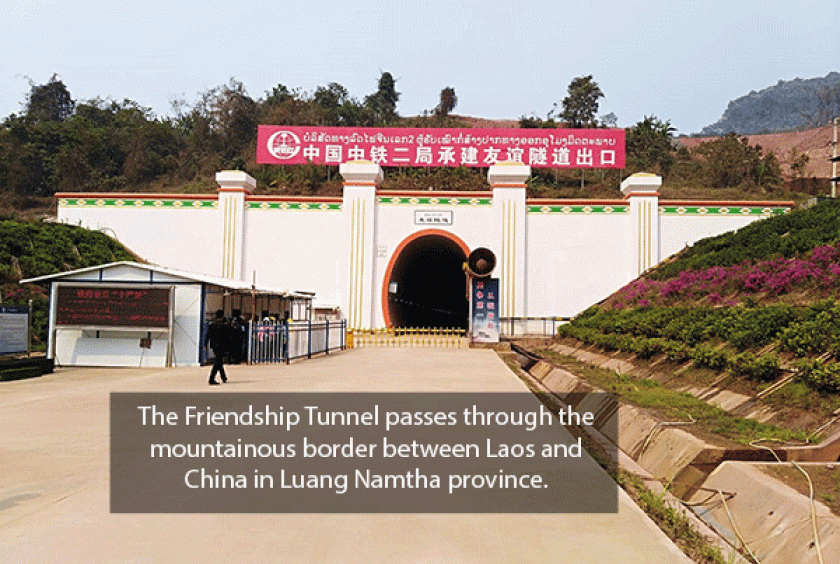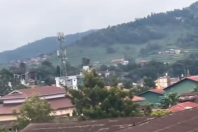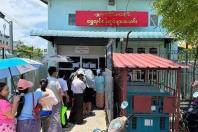
Vientiane (Vientiane Times) - Construction of a railway tunnel at the Laos-China border in Luang Namtha province will require the use of materials that are resistant to salt damage, so the track is not affected by the large salt deposits in the ground.
Chinese engineer Wang Xiaodong told Lao and Chinese media recently that they had encountered two salt deposits in Laos but none in China.
This tunnel at the border is the largest in the under-construction Laos-China railway and runs for a distance of 7,000 metres in China and 2,000 metres in Laos.
This means the so-called Friendship Tunnel across the border is about 9,000 metres long.
In China, workers are continuing to dig the tunnel but work in Laos has been suspended for about three months after construction crews discovered salt, while the second salt deposit is even larger.
“We have to wait until we can find sound ways to protect the railway track against salt damage. Tunnelling on the Lao side will resume in June this year,” he said.
Mr Wang said they were aware of the presence of salt deposits before they started laying the underground track, but they didn’t realise that salt was present in such large quantities. After digging down for more than 50 metres, workers continued to find salt in the ground.
Salt had also been found on the Chinese side of the railway but not to the same extent as in Laos.
However, it is believed the tunnels will be linked shortly after work on the Lao side resumes in June.
Work on the tunnel began in May 2017 and, according to the schedule, the Friendship Tunnel will be completed by the end of this year.
From the Friendship Tunnel, trains will pass to the second largest railway station on the Boten border between Laos and China in Luang Namtha province, about 1 kilometre from the tunnel. The railway then slices through western Laos to Vientiane via the provinces of Oudomxay, Luang Prabang and Vientiane.
The US$5,968 billion (37 billion yuan) railway is set for completion at the end of 2021.
To date, more than 13 billion yuan has been invested in the project. Some 87 percent of bed road construction work is now complete, 54 percent of the tunnels (13 tunnels) have been built, and 43 percent of all bridges are finished.
http://vientianetimes.org.la/freeContent/FreeConten_Railway_90.php















